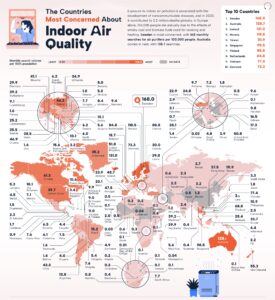Government launches aviation emissions strategy
Government’s aviation policy framework unveiled on Friday suggests that a focus on reducing airport noise could potentially impact on aviation air pollution levels
Reducing noise from aviation may in some instances create ‘unacceptable costs in terms of local air pollution’, according to the government’s long term strategy for the sector unveiled on Friday (March 22).
In such instances, the government states, the impacts of any noise abatement proposals would need to be ‘carefully assessed to allow these costs and benefits to be weighed up’.
The Department for Transport (DfT)’s aviation policy framework sets out objectives for tackling UK aviation emissions and noise as the sector grows. It updates the 2003 Air Transport White Paper.
Objectives set out in the framework aim to ensure that the aviation sector makes a significant and cost-effective contribution towards reducing global emissions. This includes, for example, working with the UN International Civil Aviation Organisation (ICAO) towards a global deal on aviation carbon dioxide emissions.
It also aims to make better use of existing runway capacity through improving transport routes to airports, liberalising the UK aviation market to encourage foreign airlines to develop routes from less-congested airports and encouraging the airport operators to consider how to utilise capacity more effectively.
Aviation emissions are largely made up of the greenhouse gas carbon dioxide, but the sector also emits nitrogen oxides and sulphur oxides. Airport-related traffic on roads around airports also contributes to nitrogen dioxide and particulate matter emissions.
With regards to noise, the framework sets out a target to reduce the number of people in the UK significantly affected by aircraft noise through better technology, implementation of noise ‘envelopes’ around airports and further use of noise abatement operational procedures.
The DfT is looking to tackle noise in four principle ways: reduction at source (quieter aircraft); better land-use planning and management; optimising how aircraft are flown and the routes they follow to limit the noise impacts; and operating restrictions (preventing noisier types of aircraft from flying either at all or at certain times.
However, the framework states: “Whilst our policy is to give particular weight to the management and mitigation of noise in the immediate vicinity of airports, there may be instances where prioritising noise creates unacceptable costs in terms of local air pollution.
“For example, displacing the runway landing threshold to give noise benefits could lead to significant additional taxiing and emissions. For this reason, the impacts of any proposals which change noise or emissions levels should be carefully assessed to allow these costs and benefits to be weighed up.”
‘vital step’
According to the DfT, the UK’s aviation sector contributes around £18 billion to the economy and has the third largest network in the world after USA and China.
Commenting on the framework, transport secretary, Patrick McLoughlin, said: “The UK is already one of best connected countries in the world but if we want to maintain our premier league status we need an aviation sector that is equipped to face the challenges of the 21st century.”
He added: “This document strikes the right balance between allowing the aviation industry to thrive while minimising impacts on the environment and local communities.”
Minster of state for transport Simon Burns said: “The government believes that aviation needs to grow, delivering the benefits essential to our economic wellbeing, while respecting the environment and protecting quality of life. The government believes that the aviation policy framework is a vital step forward in achieving this.”
The government’s aviation policy framework is available on the Department for Transport website.
In February, a study led by Manchester Metropolitan University researchers found that ‘blast’ runway fences can act as a ‘virtual chimney’ to funnel and disperse airport pollution and noise more effectively (see airqualitynews.com story).













